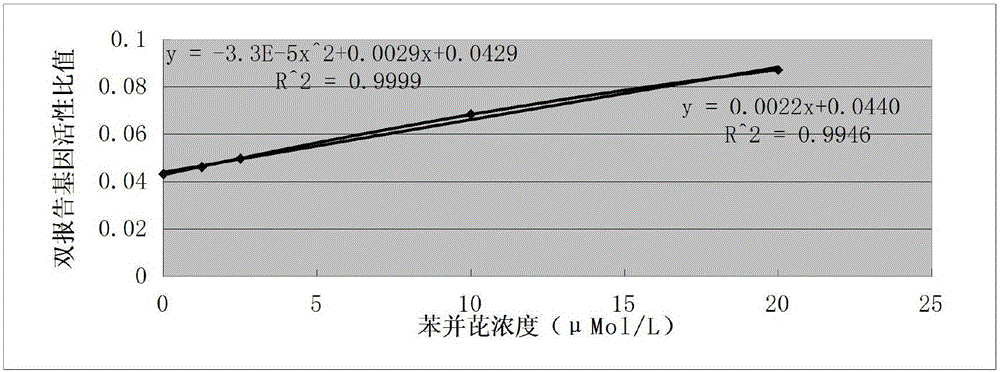A plasmid for detecting polycyclic aromatic hydrocarbon chemicals in the environment and its application
A polycyclic aromatic hydrocarbon and environmental detection technology, applied in the fields of molecular biology and environmental biology, can solve the problems of cumbersome process, complicated sample processing, and long time consumption, and achieve the effects of low immunogenicity, wide linear range, and wide infection spectrum
- Summary
- Abstract
- Description
- Claims
- Application Information
AI Technical Summary
Problems solved by technology
Method used
Image
Examples
Embodiment 1
[0054] 1. Preparation of overexpression lentiviral plasmid
[0055] Genomic DNA containing the AHR gene promoter (NM_001621-promoter) was extracted from normal human peripheral blood leukocytes, and human genomic DNA was extracted using the operation method of the Genomic DNA Purification Kit (Tiangen Biochemical, DP318). According to the known human AHR gene promoter sequence, primers at both ends were designed and synthesized: upstream primer: TGGTTAATTAAGGCACTACACTATACTGTATTC, see SEQ ID NO: 2; downstream primer: CGGGCTAGCAACAGAGCGTCGACGGGACTC, see SEQ ID NO: 3. Genomic DNA was used as a template to amplify by conventional PCR reaction, and the amplified product was recovered and purified with an agarose gel DNA recovery kit (Tiangen Biochemical, DP209-03).
[0056] Lentiviral expression vector CV060 (the sequence of elements is MCS-firefly-Luc-Tk-Renilla-Luc), purchased from Shanghai Jikai Gene Chemical Technology Co., Ltd., passed PacI and NheI restriction endonucleases (...
PUM
 Login to View More
Login to View More Abstract
Description
Claims
Application Information
 Login to View More
Login to View More - R&D
- Intellectual Property
- Life Sciences
- Materials
- Tech Scout
- Unparalleled Data Quality
- Higher Quality Content
- 60% Fewer Hallucinations
Browse by: Latest US Patents, China's latest patents, Technical Efficacy Thesaurus, Application Domain, Technology Topic, Popular Technical Reports.
© 2025 PatSnap. All rights reserved.Legal|Privacy policy|Modern Slavery Act Transparency Statement|Sitemap|About US| Contact US: help@patsnap.com



